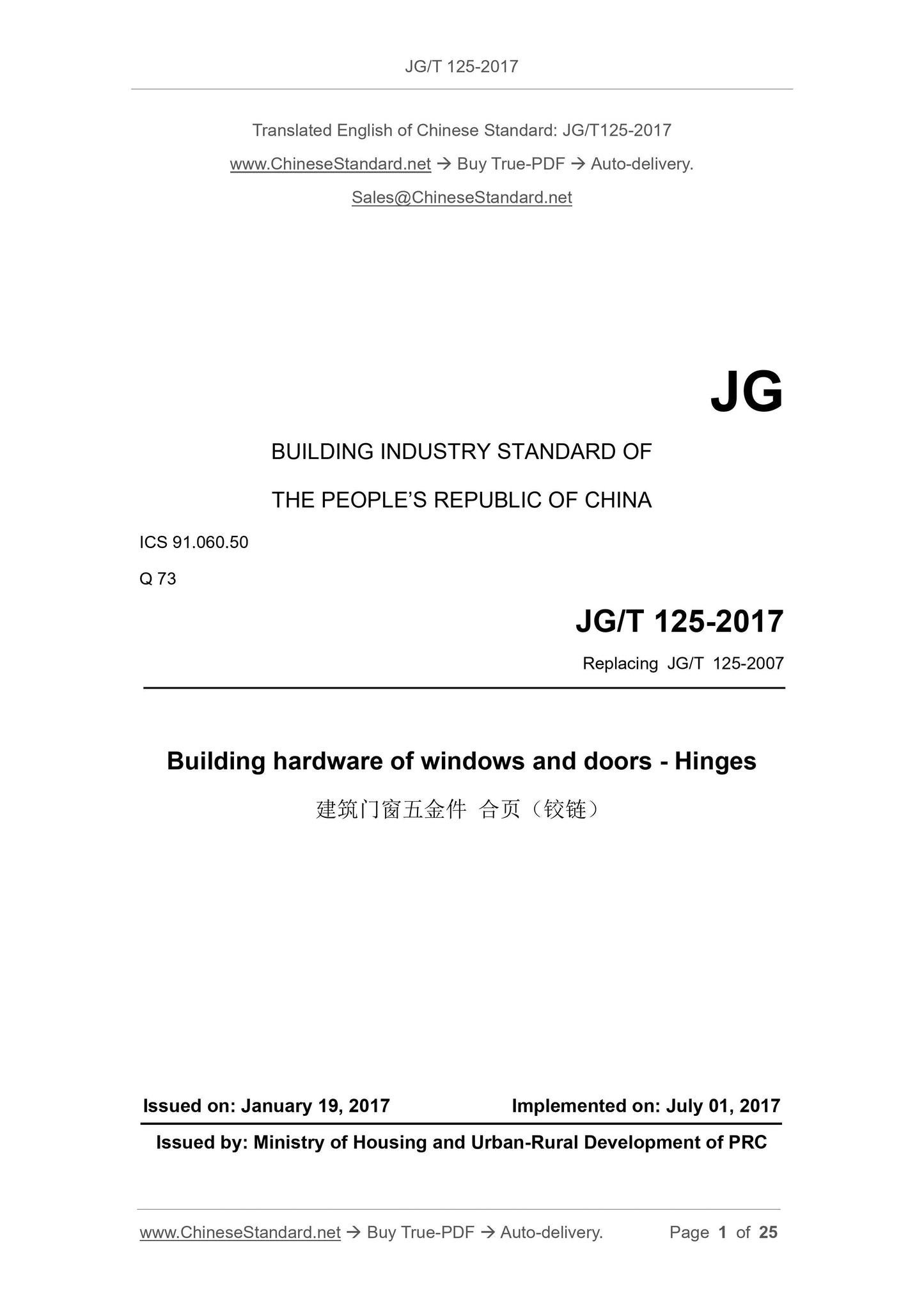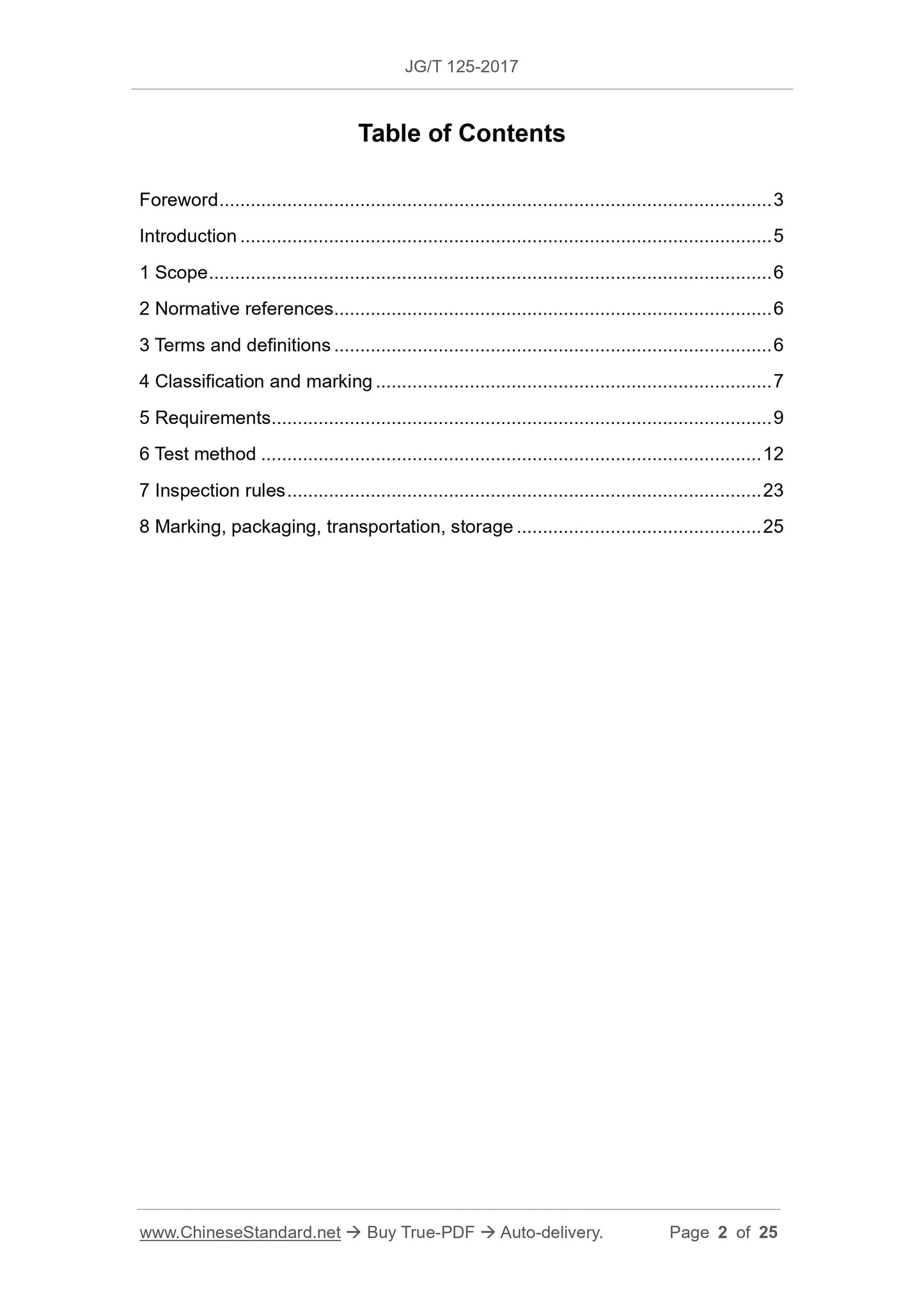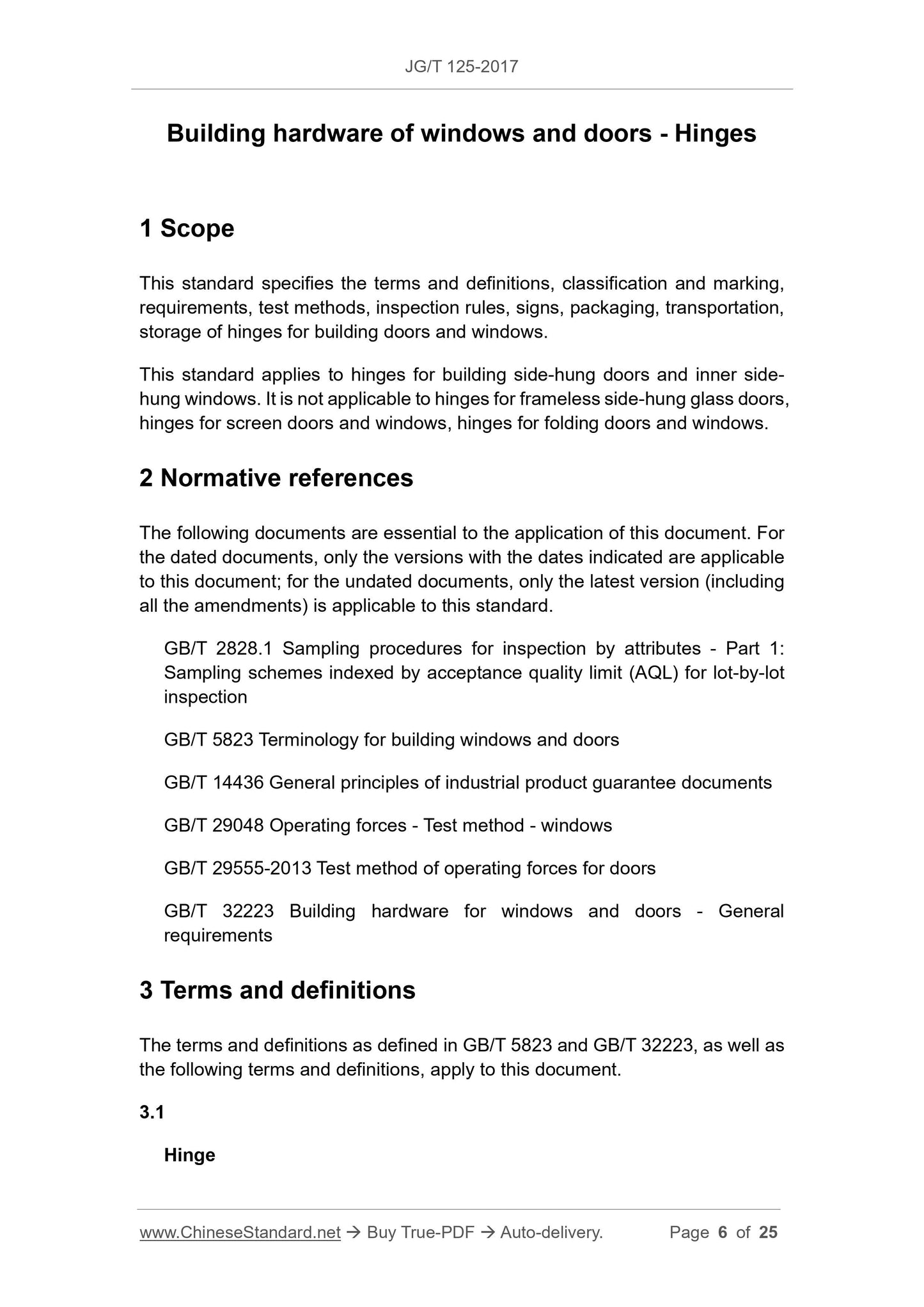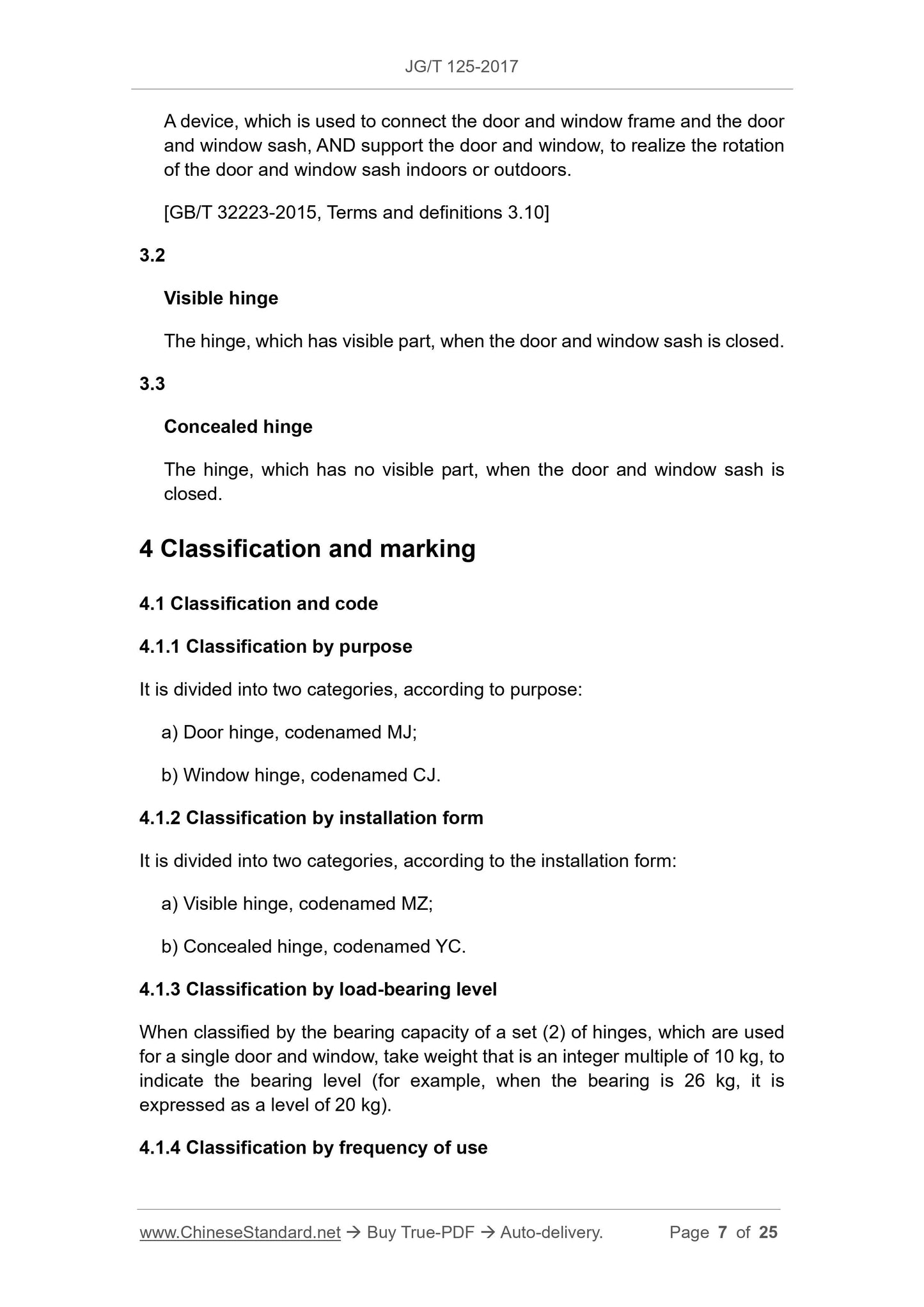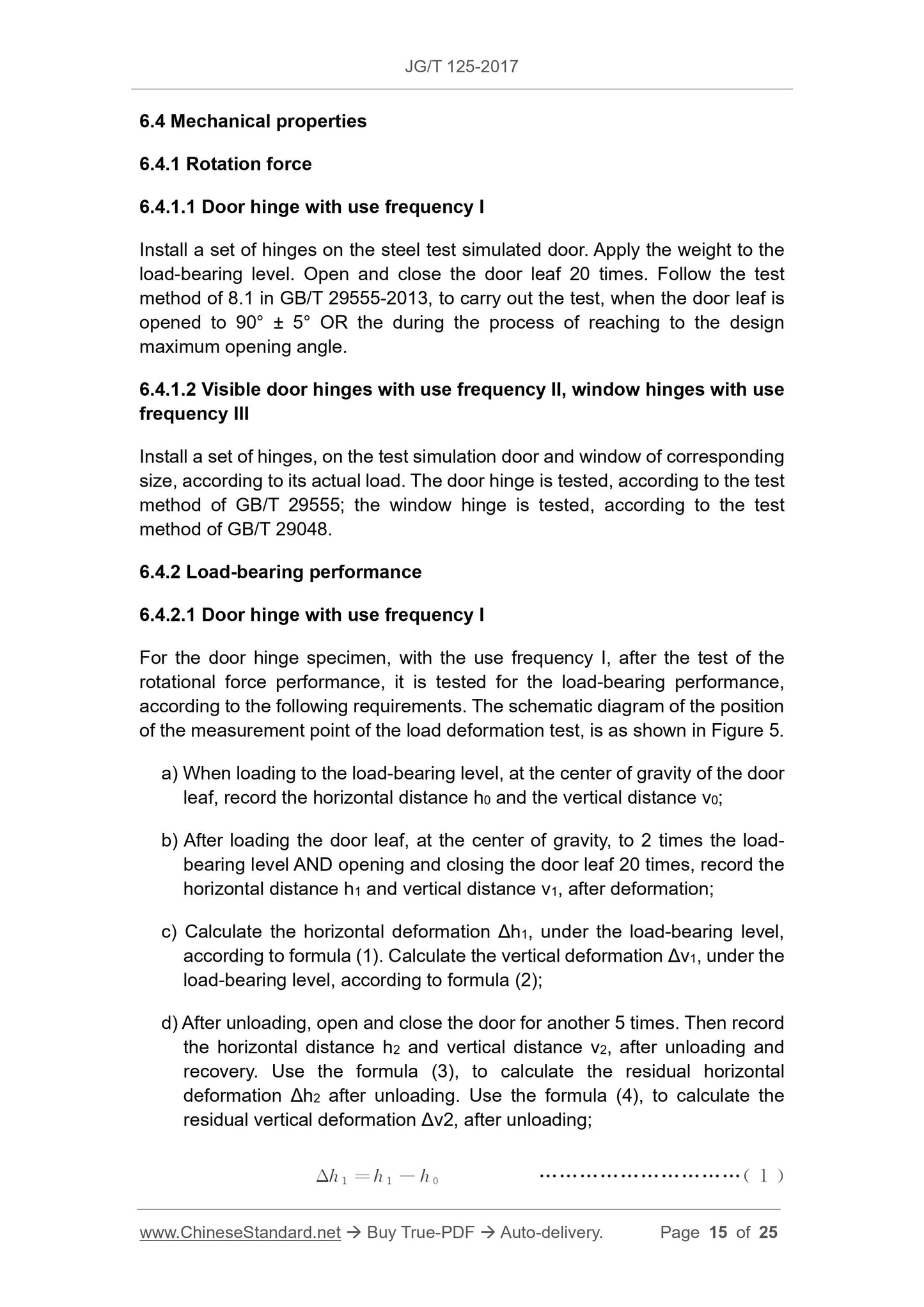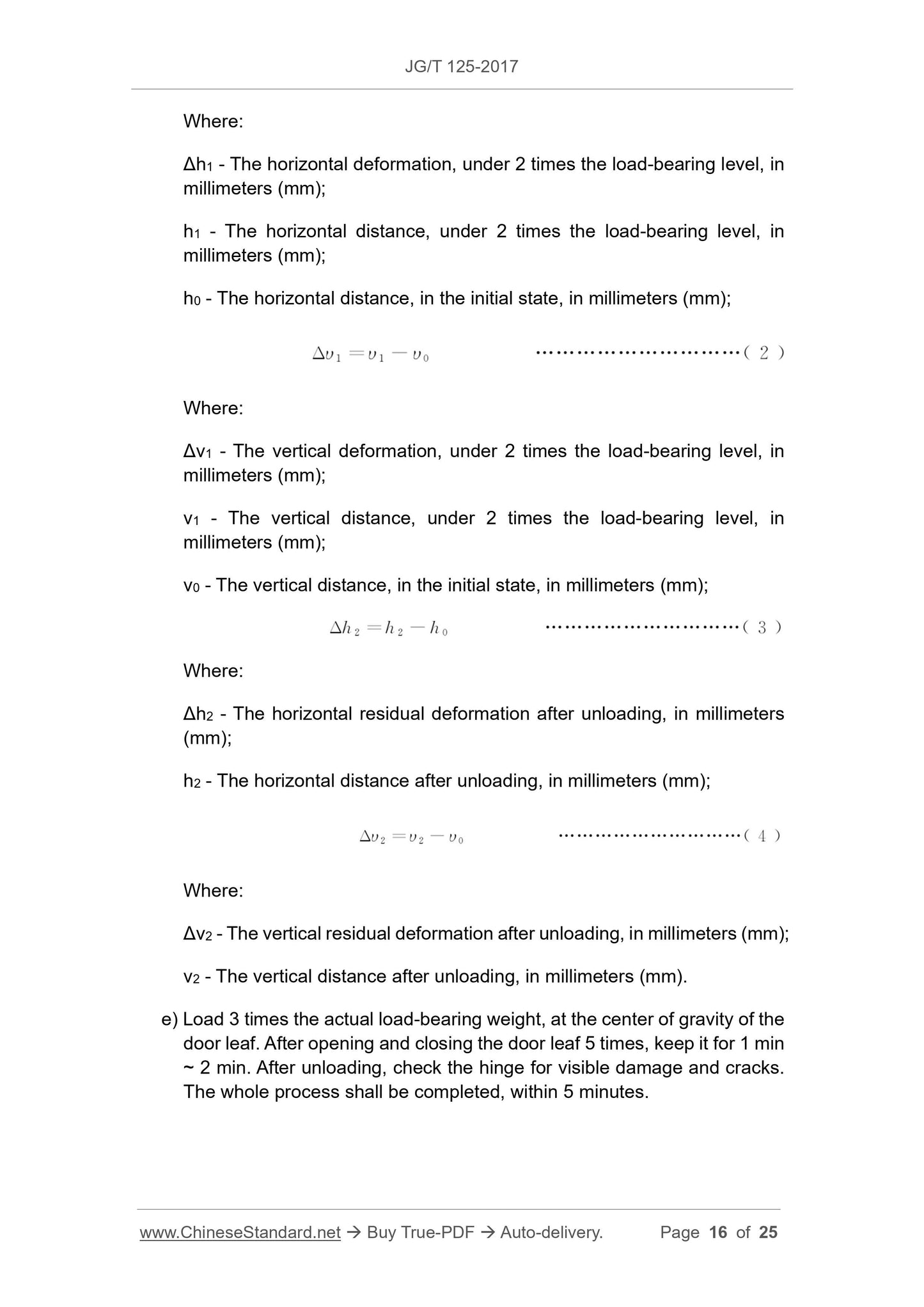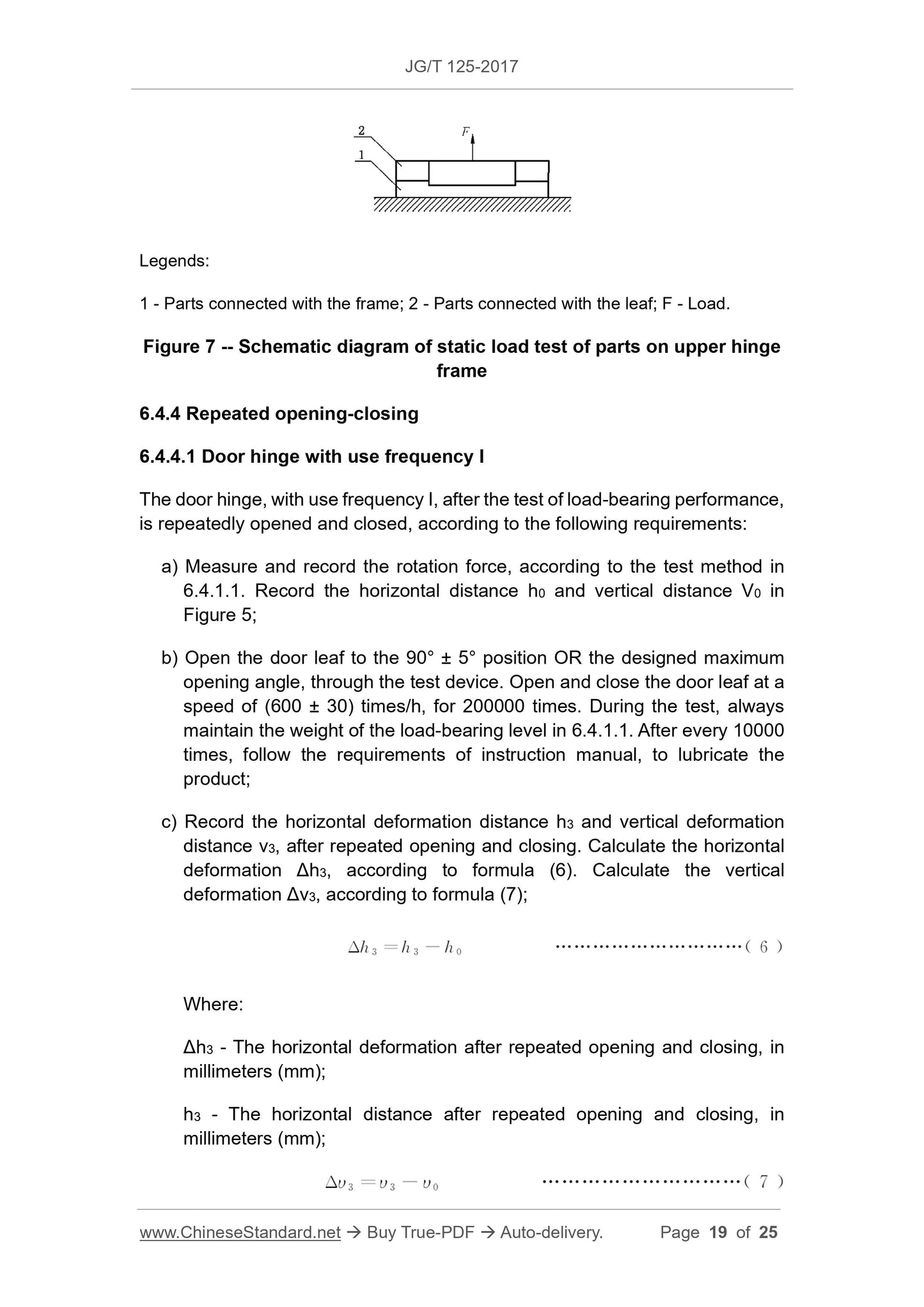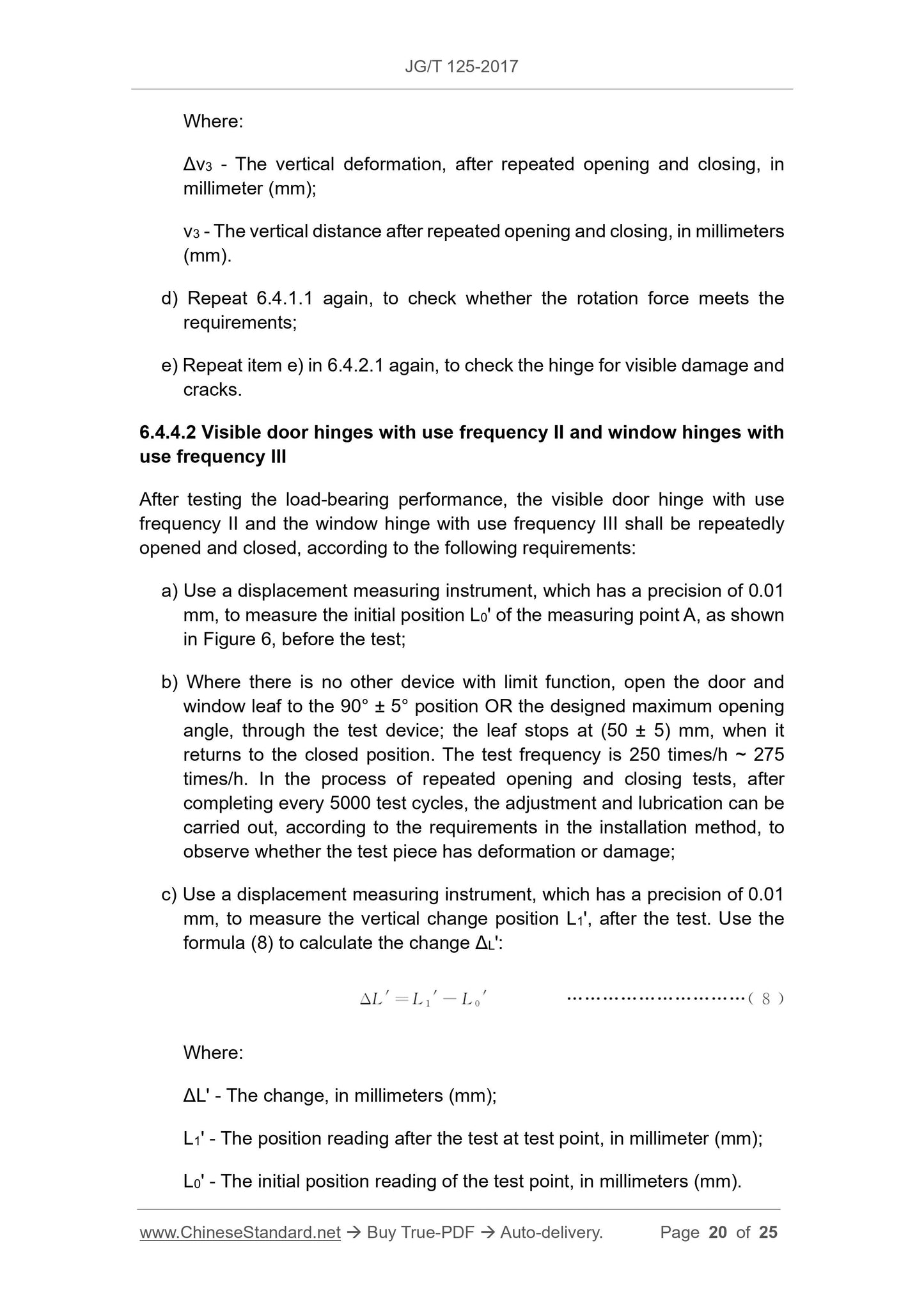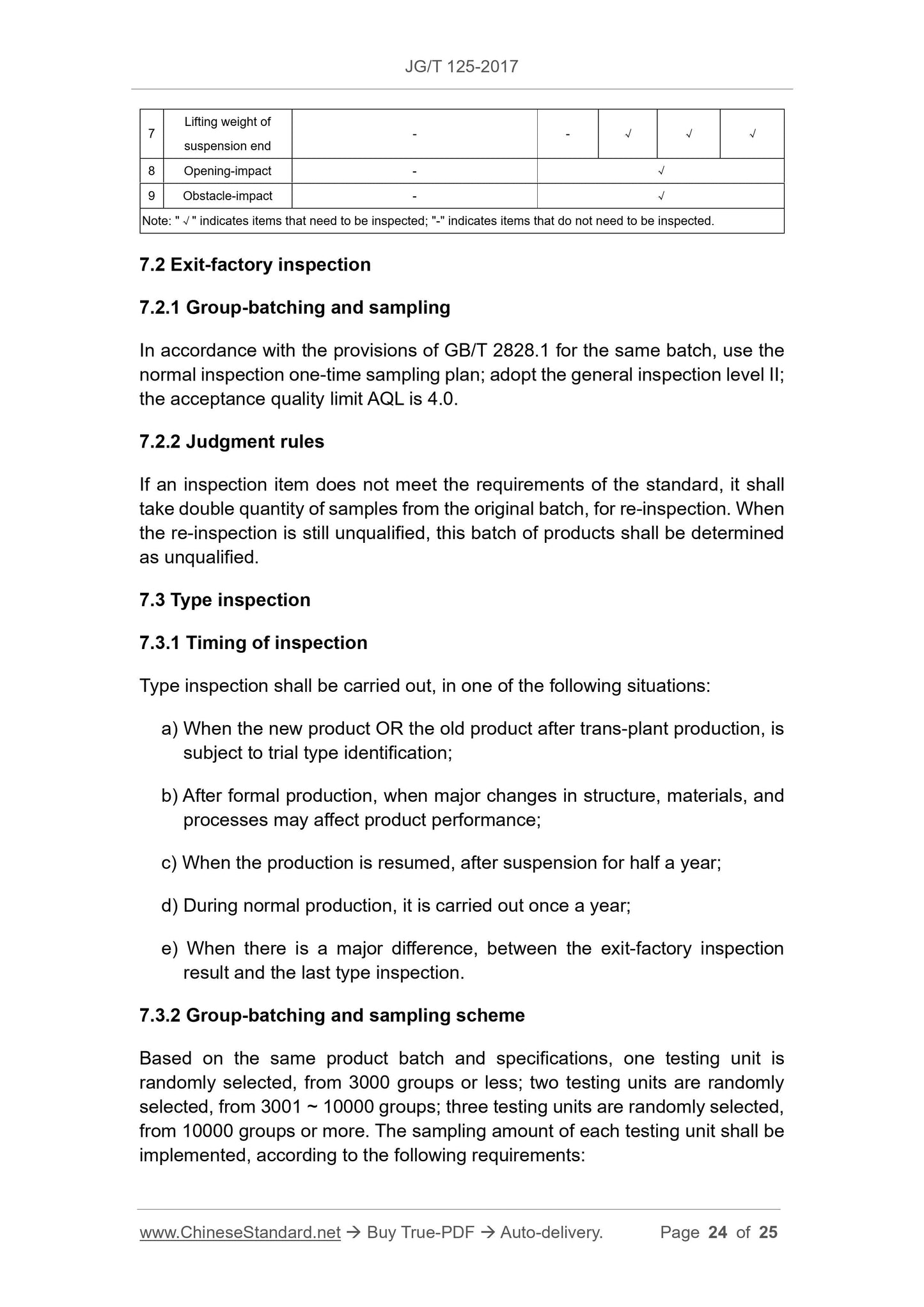1
/
of
9
www.ChineseStandard.us -- Field Test Asia Pte. Ltd.
JG/T 125-2017 English PDF (JG/T125-2017)
JG/T 125-2017 English PDF (JG/T125-2017)
Regular price
$215.00
Regular price
Sale price
$215.00
Unit price
/
per
Shipping calculated at checkout.
Couldn't load pickup availability
JG/T 125-2017: Building hardware of windows and doors - Hinges
Delivery: 9 seconds. Download (and Email) true-PDF + Invoice.Get Quotation: Click JG/T 125-2017 (Self-service in 1-minute)
Newer / historical versions: JG/T 125-2017
Preview True-PDF
Scope
This standard specifies the terms and definitions, classification and marking,requirements, test methods, inspection rules, signs, packaging, transportation,
storage of hinges for building doors and windows.
This standard applies to hinges for building side-hung doors and inner side-
hung windows. It is not applicable to hinges for frameless side-hung glass doors,
hinges for screen doors and windows, hinges for folding doors and windows.
Basic Data
| Standard ID | JG/T 125-2017 (JG/T125-2017) |
| Description (Translated English) | Building hardware of windows and doors - Hinges |
| Sector / Industry | Building and Construction Industry Standard (Recommended) |
| Classification of Chinese Standard | Q73 |
| Classification of International Standard | 91.060.50 |
| Word Count Estimation | 19,170 |
| Date of Issue | 2017-01-19 |
| Date of Implementation | 2017-07-01 |
| Older Standard (superseded by this standard) | JG/T 125-2007 |
| Quoted Standard | GB/T 2828.1; GB/T 5823; GB/T 14436; GB/T 29048; GB/T 29555-2013; GB/T 32223 |
| Regulation (derived from) | Ministry of Housing and Urban - Rural Development Notice No. 1426 of 2017 |
| Issuing agency(ies) | Ministry of Housing and Urban-Rural Development of the People's Republic of China |
| Summary | This standard specifies the terminology and definition, classification and marking of hinges (hinges) for building windows and doors, requirements, test methods, inspection rules, marking, packaging, transportation and storage. This standard applies to the building to open the door, within the flat window hinge (hinge). Not suitable for frameless glass doors with hinges, screens door hinges (hinges), folding doors and windows with hinges (hinges). |
Share
